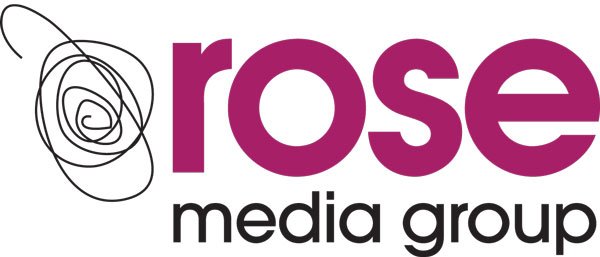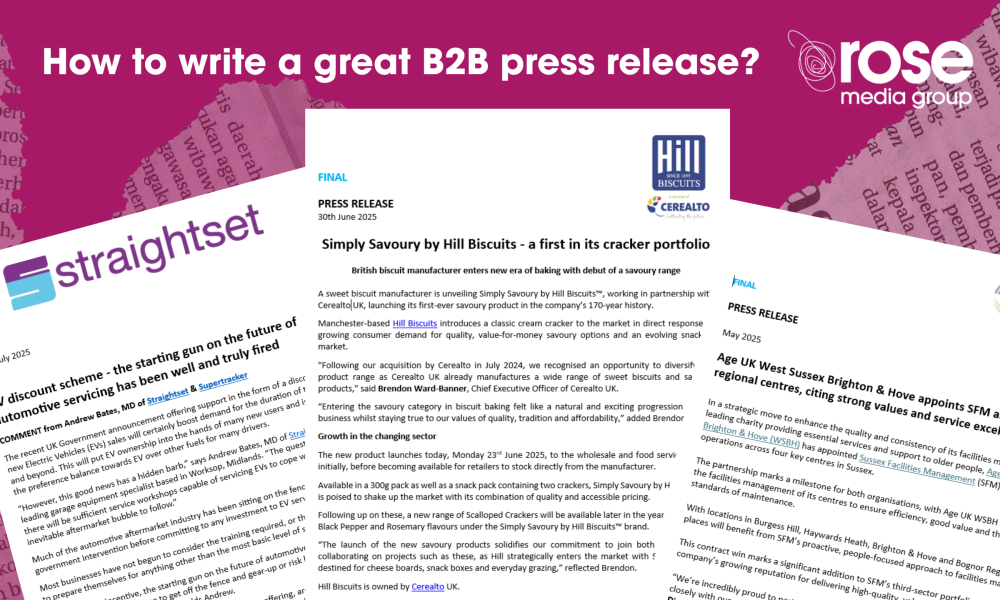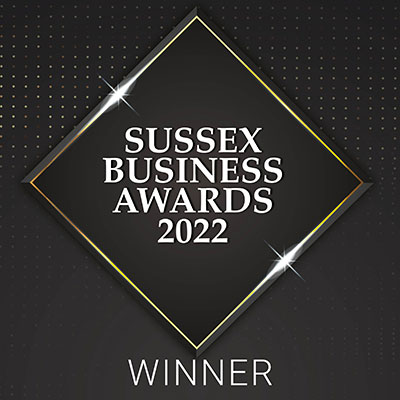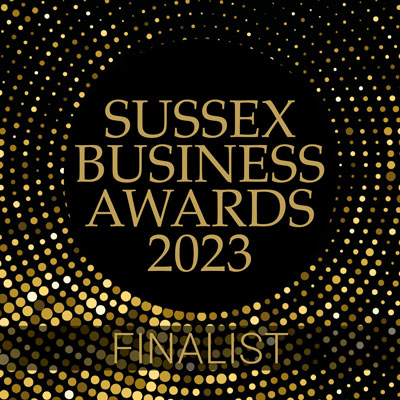In B2B communications, a press release is a strategic tool. Whether you’re launching a new product, highlighting a milestone or announcing a major win. How you frame the story can determine whether it lands with your audience or gets ignored.
Writing a hard-hitting press release isn’t about stringing together facts and buzzwords. It’s about crafting a clear, purposeful story that resonates with your target audience – from trade journalists to industry stakeholders to drive your desired outcome.
In our latest blog, we share industry-backed insights on how to create a business-to-business (B2B) press release that grabs attention from even the most demanding journalists. After all, we know a thing or two about turning a B2B subject into a compelling story and writing it to fit a particular audience and purpose.
Here are some B2B PR pointers to get you started:
-
Understand your reader and what they care about
If you are writing for a specific industry, know your target media and the audience. Begin with questions such as what are they reading about? Who are they and do they already know a lot about the topic you’re writing about? Is this story even relevant to them?
Choose your reader wisely because in the digital landscape (and not all press releases are actually going to make the print, sadly!) their attention span is short and time is money so make sure you know who you are writing for.
-
Put the most important and interesting bit of your story first
The press release opener is the first chance to grab attention. Remember, journalists are busy people and they receive 100s of press releases a day so make yours stand out aiming for being the ‘top story’ for the day.
-
Treat your press release like a news story
Write it like a news story, not a sales pitch. Remember it should be non-commercial to achieve maximum impact so keep the clarity, relevance and timing perfect.
-
Balance facts with feelings
Story telling in a press release is about evoking a feeling, even in B2B. The most effective way to do this is through your quotes by bringing in personality and emotions showing the human side of your business. Facts and figures are key to giving your release credibility and oomph. For example of “We’re launching a new range of biscuits.” Elevate it by providing industry context and data so it becomes relevant with authority instead…. “A sweet biscuit manufacturer is unveiling Simply Savoury by Hill Biscuits™, working in partnership with Cerealto UK, launching its first-ever savoury product in the company’s 170-year history.”
-
Aim for the copy and paste in the media
A release that’s so well-structured and readable will make a journalist’s life much easier as they can lift text straight into an article. And isn’t it fab seeing your own words published on a digital platform of a leading trade magazine?
What’s the structure of a B2B press release?
-
Headline and subheading
As you’d expect, headlines tell the full story in a few words with relevancy in mind, for your audience. Using present tense is always best and avoid puns as they may confuse the story. It also takes away the potential satisfaction from the journalist, making a pun themselves.
-
Your ‘in a nutshell’ paragraph
This is your make-or-break paragraph which should summarise to your audience what happened and why they should care, literally in five seconds flat. So, if anything but the nutshell gets published (and that happens in NIBs or News in Brief in the trade press), the reader still knows the what, where, how, when, why and which… You can also use a past tense here.
-
A paragraph or two unpacking the story
Lead the reader through the story, adding a bit more detail with some research, if appropriate. Think about the questions your audience might have and answer them. This is your chance to add to your nutshell.
-
A human-sounding, engaging quote to evoke a feeling
Break out of plain facts and add emotion and interpretation.
-
A wrap of the story
After two or more paragraphs, the release should be completed but you can add more explanatory paragraphs then a quote… and repeat this if necessary. Remember, the shorter your release is, the more likely it will be published in its entirety.
-
Notes to editors and contact details
Make it super easy for a journalist to email you for more information. More often than not, journalists research your clients and if they are on a deadline they will want to email for a quick comment other than what’s in the release. Make sure you’re available when distributing the story and for two to three days thereafter.
Photos and attachments
Always include a strong, relevant image which ties in with your story. Journalists are far more likely to pick up a release that comes ready with a quality photo, making it quick and easy to publish online. Just one tip: Keep your image file size sensible! Sending a 25MB image is sure to irritate an editor and trust us, they’ll remember!
Good luck and if you’d like the Roses to help, please call 01444 241341 or drop us an email at hello@rosemediagroup.co.uk










